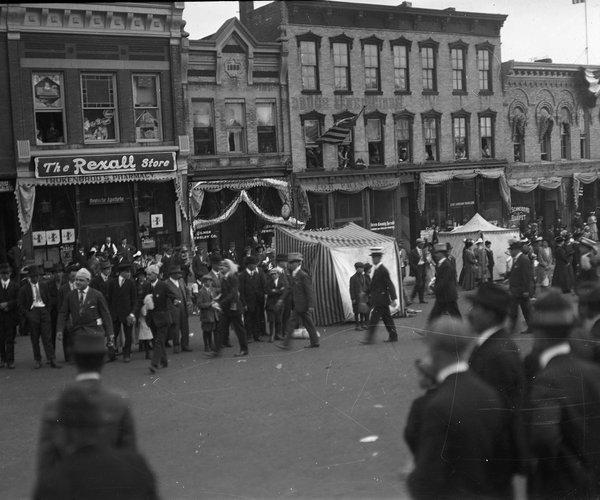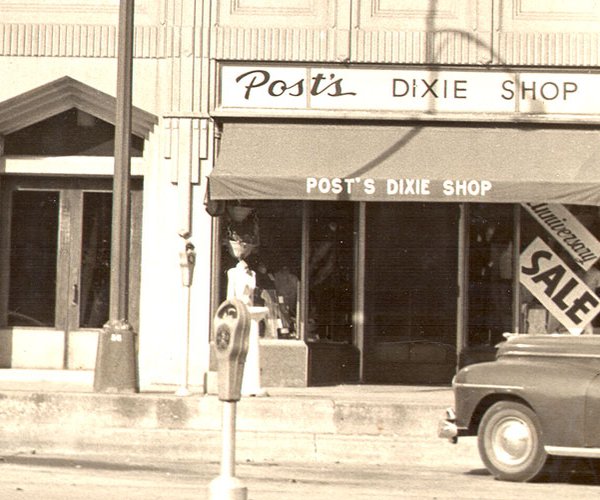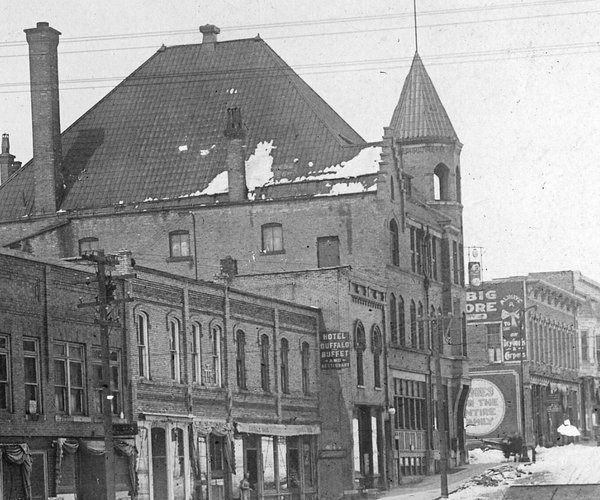The Monroe Arts Center recently finished celebrating its fiftieth year of serving the community with an exhibit from June 6 through August 23. These four columns will go back to the beginning of the Methodist Society in Monroe and learn about the establishment of the organization and the construction of the beautiful building, which was a major process that took more than 18 years to complete.
According to the 1891 city directory, after the Methodist Society was formed, Jacob Lybrand deeded the entire block where the MAC now sits to the society early in 1842. A plain wooden church was built of “oak timber and basswood lumber” and then remodeled in 1858. It was used until the current building was started in 1869. A parsonage was also in use at that time.
A meeting was held on August 8, 1867 where “the question of building a new house of worship was considered, and the unanimous voice of the official board given in favor of the project.” The question was taken to the entire membership and it was decided to build the new building. E. Townsend Mix, a Milwaukee architect was here on March 23, 1869. He brought a number of plans “from which the building committee selected a very neat and substantial one, to cost about $12,000.” Mix and the committee decided to build solid brick walls, veneer with brick. Mix proceeded at once to make the estimates and specifications so the contract for the job could be let and work commenced as soon as possible. Mix was in favor of putting the building in the center of the block.
Ground was broken for the new edifice at the end of April; the work was to be pushed as quickly as weather permitted. The spring had been unfavorable for building purposes at that time with work having already been delayed more than a month because of the weather. By the end of May, the excavation for the basement had opened a quarry of excellent stone, more than needed to build the basement of the church. They offered to sell those building stones “on reasonable terms.”
The plans and specifications for the building were received from Mix by June 9. “All who have seen it are highly pleased with the plan.” Others who wanted to see what the new church would look like when finished were invited to stop at the Goddard & Miller store on the west side of the square. The masons were putting up the stone wall for the basement by July 14 and expected to begin the brick work about 10 days later — weather permitting.
“The interesting exercises of laying the cornerstone” were held at 10:30 a.m. on August 10 and was witnessed by a large number of people. Rev. Samuel Fallows, of Milwaukee, preached the sermon. “Most of the business houses were closed from 10 to 12 o’clock, thus affording our businessmen and all classes of citizens an opportunity of being present on that occasion.”
Nothing more was mentioned of work on the church until February 9, 1870. It was then stated that they would “push things” as soon as the spring was far enough advanced to resume the laying of brick. A notice on April 6 requested that all members of the Methodist Society meet that evening for the purpose of devising ways and means necessary for resuming work.
The Society planned to resume work a few days after May 4 and get the church “enclosed and the basement ready for occupancy as soon as possible. The woodwork for the doors, windows and cornices is all completed; the brick is on the grounds, and the work on the walls will be pushed forward with vigor.” The brick masons had begun work by June 1.
The spire was being raised by the end of June. It reached up into the sky, way above the tree tops, “giving an impression of what it will be when finished.” It was reported on August 3, “A colored person received a shock when a capstone fell from the building. The stone was broken and the darkey’s head uninjured. The boss was informed that if he did not ‘want them stones broken, they must be kept off his head.’”
The church was fast approaching completion by August 24. The editor added, “This elegant structure will be the handsomest church edifice in this state, when completed.” Even though the church wasn’t finished inside, the basement was able to be used for services. Union Thanksgiving services were held in the Methodist Church that year by Reverend Minor, of the Congregationalist church, preaching. Church slips for the Methodist Church were rented on Wednesday evening, November 30. All persons wishing to rent slips were requested to be present. A pleasant dinner was served there on Christmas Eve afternoon for the M. E. Sabbath School. “It was a success in every way.”
In order to raise funds for the new church, the ladies of the church held a festival from 1:00 to 4:00 on Friday afternoon, January 25, 1871 to which “the hungry and good-natured people” were expected to be “at home.” Oysters and other refreshments were available in the evening with “music and Back in the Day 252- 1[a] fair.” The event must have been successful; it was announced on February 22 that the women had already raised $2,000 toward the debt of $5,000.
By mid-March the $5,000 had been raised, enough to complete the basement and spire. Work was recommenced in August and the committee intended to “push things” until the outside and basement were completed. By September 6 the work was “progressing finely. The spire is now being built, and it looms up gracefully.”
You may read more in the next three columns about the continuation of the building of the church. It would be another 16 years before the beautiful facility is finished.
— Matt Figi is a Monroe resident and a local historian. His column will appear periodically on Saturdays in the Times. He can be reached at mfigi48@tds.net or at 608-325-6503.





